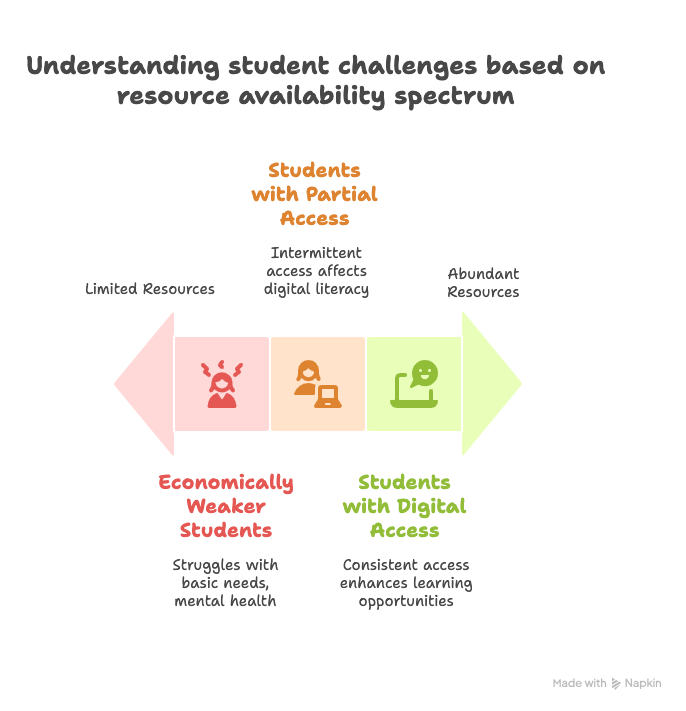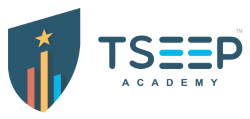When Poverty Meets the Classroom: Breaking the Barriers to Educational Equity By TSEEP Academy
Behind every classroom sits a student carrying more than just a backpack. For many, the invisible weight of poverty, limited resources, and lack of digital access profoundly shapes their educational journey.
A recent socio-economic survey conducted among nearly a thousand college students in Kerala paints a revealing picture of the connection between poverty, digital inequality, and academic performance. While education is often considered a path to opportunity, this report reminds us that not all students start that journey on equal footing.
Poverty and Academic Attainment: A Tough Climb: –
The findings reveal that a significant percentage of students belong to low-income households, with many families earning less ₹ 10,000 per month. In such homes, priorities are often survival-based—food, housing, and healthcare come before textbooks or internet bills.
As a result:
- Many skip private tuitions, online courses, or career coaching sessions.
- Students struggle to afford tuition fees, books, and transportation.
- Some are forced to work part-time, compromising study hours.
- Poverty doesn’t just limit resources—it erodes time, focus, and energy.

The Digital Divide: A Modern-Day Inequality
In an age where education increasingly relies on technology, digital access is no longer a luxury – it’s a necessity. Yet, the survey found that:
- Only 63% of students always had access to digital tools like computers and internet.
- Over 36% faced irregular or no access at all.
- A critical 5.8% of students rarely or never had digital access at home.
- This divide means that a large section of students are:
- Unable to attend online classes regularly.
- Missing out on e-resources, educational platforms, and digital assignments.
- Lacking the basic digital literacy increasingly expected in both academics and the job market.
- In essence, the digital divide is fast becoming the new face of educational inequality.
Mental Health: The Silent Cost of Inequality
- Financial stress doesn’t just affect grades – it affects minds.
- Students from economically weaker sections often experience:
- Anxiety over fees and future.
- Stress from balancing studies and financial responsibilities.
- Feelings of inadequacy compared to peers from better-off families.
- Social isolation due to the inability to participate in digital forums or campus activities.
Without support, these pressures may lead to burnout, academic disengagement, or even dropout. Education, instead of being empowering, becomes overwhelming.
What Needs to Change?
To address these challenges, a multi-layered approach is needed:
- Expand need-based financial aid and simplify access to scholarships.
- Close the digital gap through subsidized internet, free devices, and on-campus digital resource hubs.
- Support mental health with counselling, peer support groups, and stress-management initiatives.
- Train teachers and staff to recognize signs of socio-economic distress and provide sensitive support.
- Engage families through awareness and empowerment programs, regardless of parental education levels.
Final Thought: Education with Empathy
True educational equity is not about treating every student the same – it’s about meeting them where they are and giving them what they need to thrive.
The stories behind these statistics aren’t just numbers – they are calls for compassion, inclusion, and action. If we want a future driven by talent, not just privilege, we must address poverty and digital inequality as the foundational challenges of our education system.
Let’s not leave any student behind—not because they lacked potential, but because they lacked support.




